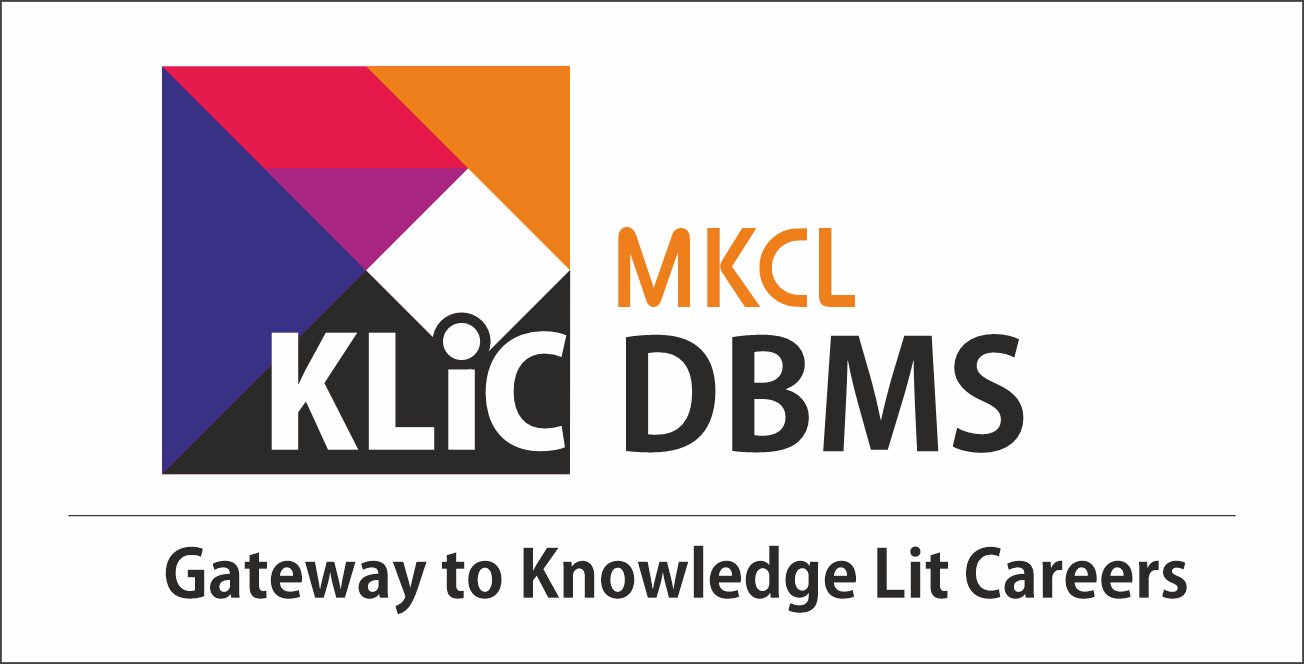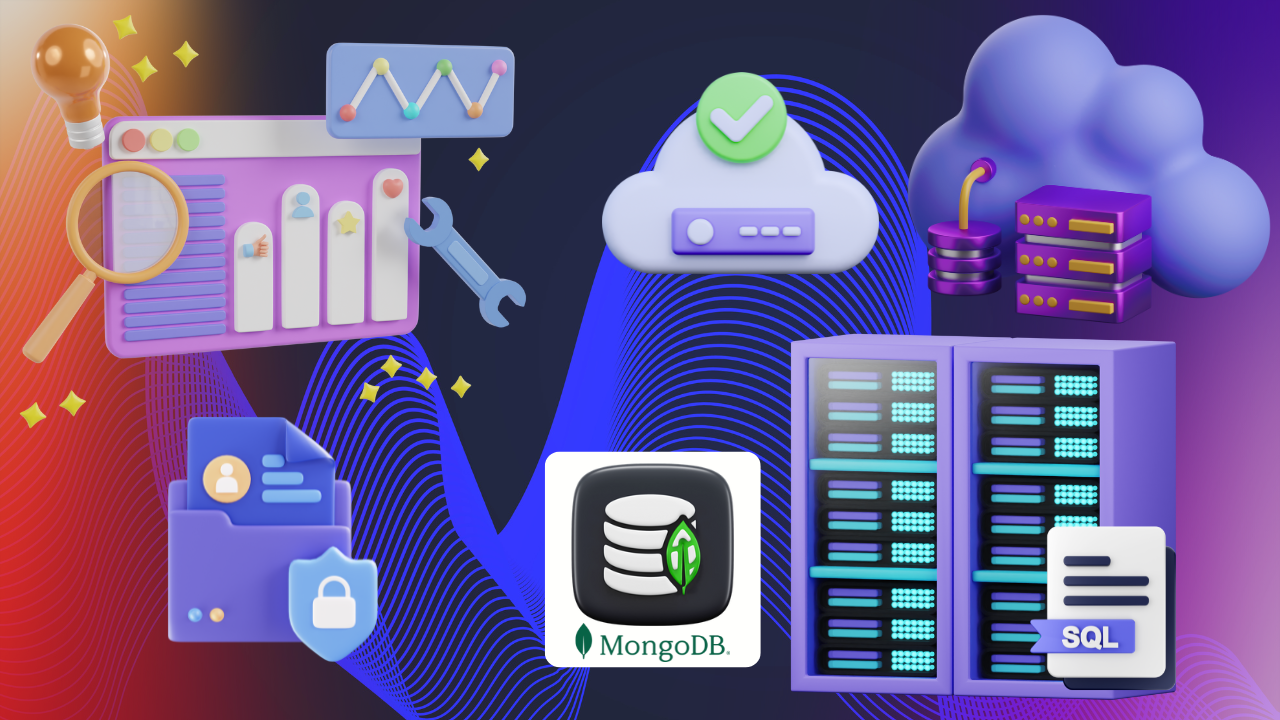- Understand and implement advanced transaction management and concurrency control techniques.
- Apply recovery mechanisms for ensuring data integrity and fault tolerance.
- Analyze and use NoSQL database models including key-value, graph, and document-oriented systems like MongoDB.
- Design and deploy databases on cloud platforms and understand sharding architectures.
- Utilize BI tools like Power BI, Tableau, and Qlik Sense for data analysis and visualization.
- Implement indexing, aggregation, replication, and MapReduce in MongoDB.
- Evaluate database performance and manage real-world data-driven applications.

Advanced Database Management and Application
Apply database concepts in real-world applications using normalization and schema design.
Introduction
What you'll learn ?
- Implement advanced concurrency control and recovery techniques in database systems.
- Design, deploy, and manage NoSQL databases with performance optimization strategies.
- Use cloud-native databases and understand distributed database architecture.
- Create real-time dashboards and visual analytics using BI tools.
- Perform complex MongoDB operations including schema design, CRUD, indexing, and aggregation.
Syllabus
- Transaction Support in SQL
- Introduction to Concurrency Control
- Two-Phase Locking Techniques for Concurrency Control
- Variations of Two-Phase Locking
- Dealing with Deadlock and Starvation
- Deadlock Detection
- Concurrency Control Based on Timestamp Ordering
- Multiversion Concurrency Control Techniques
- Granularity of Data Items and Multiple Granularity Locking
- Recovery Concepts
- NO - UNDO or REDO Recovery Based on Deferred Update
- Recovery Techniques Based on Immediate Update
- Shadow Paging
- Database Backup and Recovery from Catastrophic Failures
- Working of Key-Value Databases
- Features and Functions of Key-Value Databases
- Schema Design to Support Key Value
- Key - Value Database Vs Cache
- The Property Graph Model
- Why Data Relationships Matter
- Why Other NoSQL Databases don’t Fix the Problem Either
- Relational vs Graph Data Modelling Match-Up
- Example Data Model - Fraud Detection in Email Communications
- Database Query Language
- Difference Between Cloud and Database
- Cloud Database Deployment Models
- Key Benefits of Cloud Databases
- When to Use a Cloud Database
- Additional Considerations of Cloud Database
- Some Large Cloud Providers and Databases
- Advantages of Sharding
- Shared - Nothing Architecture
- Shared - Disk Architecture
- Sharding
- Sharded Cluster Components
- Considerations Before Sharding
- Sharded and Non-Sharded Collections and Connecting to a Sharded Cluster
- Introduction, Benefits of Business Intelligence Tools
- Best data analytics and BI tools
- Microsoft Power BI
- Tableau
- Qlik Sense
- Sisense
- Best BI tool for developing and deploying analytics apps
- Looker – data analytics and BI tool for start-ups and mid-sized businesses
- Oracle
- Domo BI
- SAS Analytics
- Relationship of RDBMS Terminology with MongoDB
- Sample Document
- Key Components of MongoDB Architecture
- MongoDB - Advantages
- Functionality of MongoDB
- MongoDB - CAP Approach
- MongoDB - Hierarchical Objects
- MongoDB - Environment
- MongoDB Processes and Configuration
- Install MongoDB on Windows
- Install MongoDB on Ubuntu
- MongoDB Statistics
- CRUD Operations in MongoDB
- Data Modelling
- Some Considerations While Designing Schema in MongoDB
- Create Database
- Drop Database
- Create Collection
- Data Types
- Insert Document
- Query Document
- Update Document
- Delete Document
- Design and Develop MongoDB Queries using CRUD operations
- Projection
- Limiting Records
- Sorting Records
- Aggregation - Examples
- Authentication Mechanisms in MongoDB
- Bulk Operations with Examples
- Indexing
- Replication
- Program to Implement Aggregation and Indexing in MongoDB
- Create Backup of Sharded Cluster
- SQL vs Mongo DB Entities
- Consistency of Data
- Query through API
- Exercise on Student Database Agenda
- MongoDB – Deployment
- Typical MongoDB Deployment, Read Preference and Write Concern_1
- Operation Performance and Partition
- Relationships
- Database References
- List of Drivers Supported by DBRefs
- MongoDB - Map Reduce
- Using MongoDB as a Service: mLab
- Execute the Query and Study its Execution Plan
- Careers in Database Technology
Certificate
- MKCL provides certificate (for 30/60/90 hours courses) to the KLiC learner after his/her successful course completion.
Academic Approach
The Academic Approach of the course focuses on the “work centric” education i.e. begin with work (and not from a book !), derive knowledge from work and apply that knowledge to make the work more wholesome, useful and delightful. The ultimate objective is to empower the Learner to engage in socially useful and productive work. It aims at leading the learner to his/her rewarding career as well as development of the society.
Learning methodology
- Learners are given an overview of the course and its connection to life and work.
- Learners are then exposed to the specific tool(s) used in the course through the various real-life applications of the tool(s).
- Learners are then acquainted with the careers and the hierarchy of roles they can perform at workplaces after attaining increasing levels of mastery over the tool(s).
- Learners are then acquainted with the architecture of the tool or Tool Map so as to appreciate various parts of the tool, their functions and their inter-relations.
- Learners are then exposed to simple application development methodology by using the tool at the beginner’s level
- Learners then perform the differential skills related to the use of the tool to improve the given ready-made outputs.
- Learners are then engaged in appreciation of real-life case studies developed by the experts.
- Learners are then encouraged to proceed from appreciation to imitation of the experts.
- After imitation experience, they are required to improve the expert’s outputs so that they proceed from mere imitation to emulation.
- Finally, they develop the integral skills involving optimal methods and best practices to produce useful outputs right from scratch, publish them in their ePortfolio and thereby proceed from emulation to self-expression.
Evaluation Pattern
Evaluation Pattern of KLiC Courses consists of 4 Sections as per below table:
| Section No. | Section Name | Total Marks | Minimum Passing Marks |
|---|---|---|---|
| 1 | Learning Progression | 25 | 10 |
| 2 | Internal Assessment | 25 | 10 |
| 3 | Final Online Examination | 50 | 20 |
| Total | 100 | 40 | |
| 4 | SUPWs (Socially Useful and Productive Work in form of Assignments) | 5 Assignments | 2 Assignments to be Completed & Uploaded |
MKCL’s KLiC Certificate will be provided to the learner who will satisfy the below criteria:
- Learners who have successfully completed above mentioned 3 Sections i.e. Section 1, Section 2 and Section 3
- Additionally, learner should have completed Section 4 (i.e. Section 4 will comprise of SUPWs i.e. Socially Useful and Productive Work in form of Assignments)
- Learner has to complete and upload minimum 2 out of 5 Assignments
Courses Fee Structure from 01 July, 2025 Onwards
KLiC 30 hour course fee applicable from 01 July, 2025 all over Maharashtra| KLiC Course Duration | MFO: MKCL Share (Including 18% GST) |
ALC Share (Service Charges to be collected by ALC) |
|---|---|---|
| 30 hours | Rs. 300/- | Rs. 1,500/- |
Important Points:
* Above mentioned fee is applicable for all Modes of KLiC Courses offered at Authorised Learning Center (ALC) and at Satellite Center
* Total fee is including of Course fees, Examination fees and Certification fees
* MKCL reserves the right to modify the Fee anytime without any prior notice
* Above mentioned fee is applicable for all Modes of KLiC Courses offered at Authorised Learning Center (ALC) and at Satellite Center
* Total fee is including of Course fees, Examination fees and Certification fees
* MKCL reserves the right to modify the Fee anytime without any prior notice
